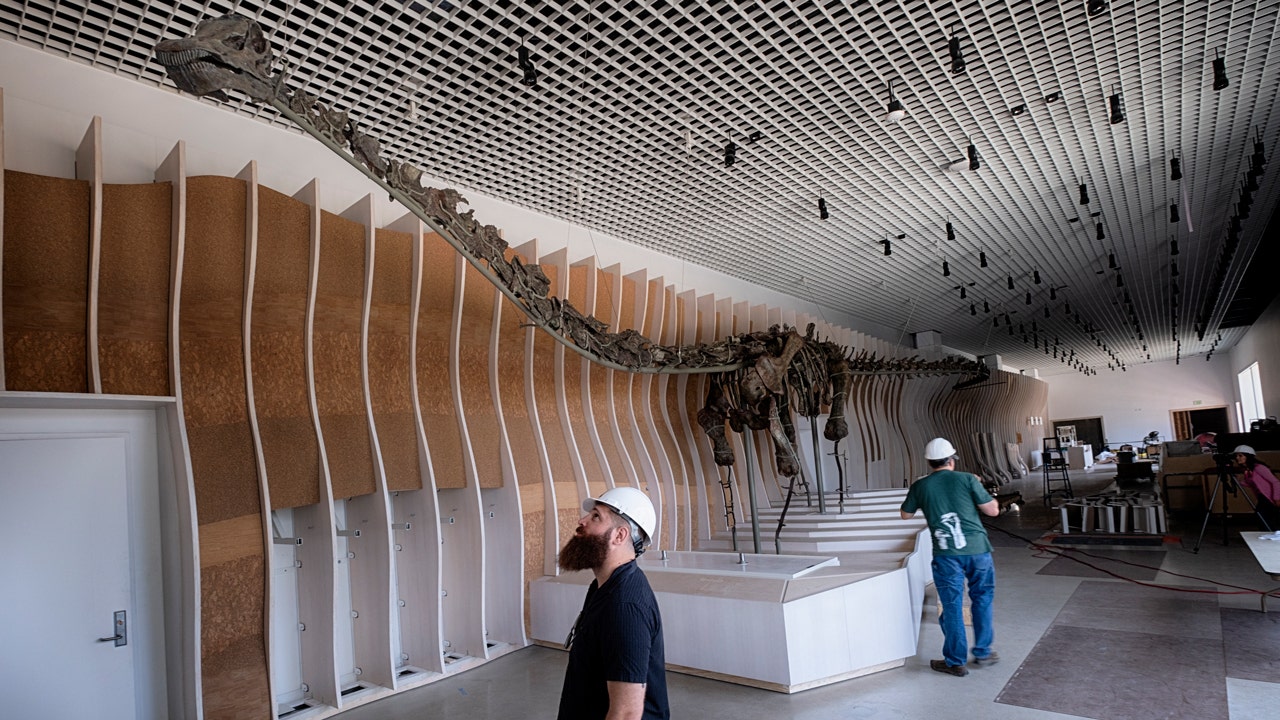A group of men sprints across a windswept beach, holding what look like outsize butterfly nets, and close in on a colony of seals trying to escape into the sea.
The pursuers wrestle with their quarry: Seals entangled by fishing gear and other maritime garbage, whose fortunes are about to be reversed. As one man pins down a panicked animal, another cuts away the plastic deeply embedded in its neck. The chase ends with a freed seal triumphantly returning to the ocean.
Ocean Conservation Namibia, a nonprofit group based on the central coast of Namibia, estimates it has rescued around 3,000 seals entangled in marine garbage since 2020. Videos of its rescues posted online became a sensation during the pandemic, suggesting that the group has threaded a tricky needle: calling attention to the growing crisis of marine trash but with a feel-good ending for the affected animals.
“Without a doubt, the numbers that they get there are so much greater than anywhere else in the world,” said Jeff Harris, a research ecologist with the National Oceanic and Atmospheric Administration’s National Marine Mammal Laboratory. Mr. Harris disentangles pinnipeds himself, and said that in his best year he freed 100 California sea lions, tops. “They’re doing that in a month,” he said. “It’s really incredible.”
Ocean Conservation Namibia was founded by Katja and Naude Dreyer, a married couple who were running a kayaking company when, about a dozen years ago, Mr. Dreyer began disentangling some of the estimated million Cape fur seals that live along the country’s coast.
A major seal colony lives on the beaches near Walvis Bay, which is also a major commercial fishing port. Seal pups, inquisitive and playful, are especially drawn to ocean debris, often getting entangled after batting it about. Because seals come onto land, their entanglements are generally easier to spot.
Mr. Dreyer’s early rescues were haphazard and involved him using a paddle to pin down animals or scrambling to grab hold of their back flippers. His Instagram videos of the rescues caught the attention of Mr. Harris, who shipped Mr. Dreyer one of his customized seal rescue nets. It looks like a heavy duty windsock with a zipper, and allows rescuers to cut away fishing wire while keeping a seal’s head, and its razor sharp teeth, safely encased. For Mr. Dreyer, the net was a game changer, and meant that he and his growing team could capture bigger seals. He estimates he saved 600 seals before he and Ms. Dreyer founded their nonprofit four years ago.
When the pandemic shut down tourism, Mr. Dreyer spent more time rescuing animals while Ms. Dreyer worked on their social media posts. In May 2020 one of their videos, “Baby seal thanks his rescuers,” garnered more than a million views.
“In Covid times, with so much political and emotional turmoil all over the world, people were finding comfort and happiness watching videos of animals getting rescued,” Mr. Dreyer said. The group’s many videos have now been viewed tens of millions of times, all of them subtly hammering home the message that the ocean is awash in trash.
There are an estimated 21,000 pieces of plastic in the oceans for every person on the planet, with marine plastic killing an estimated 100,000 sea mammals a year. Discarded fishing gear accounts for about 10 percent of marine debris, with up to one million tons of lines, nets and ropes lost or tossed into the oceans each year. The United Nations has been leading negotiations among countries aimed at finalizing a groundbreaking and legally binding treaty to curb plastic waste by the end of 2024.
Julie Andersen, founder and chief executive of Plastic Oceans International, a nonprofit organization that made a documentary about Ocean Conservation Namibia called “Cutting the Line,” said the global fishing industry needs to be held more responsible for its discarded waste.
“You need local remediation efforts, but it’s endless without simultaneously addressing mitigation efforts on a global scale,” Ms. Andersen said.
Funded by donations, Ocean Conservation Namibia now has a team of seven, and is registered as a nonprofit in the United States. The Dreyers have also stopped eating fish and other animal products. “After starting this journey, Katja and I found it very hypocritical to spend so much time saving animals, only to go home and eat other animals,” Mr. Dreyer said in an email. “It just doesn’t make sense.”
Several times a week, Mr. Dreyer and his team head for the beach before sunrise. Cape fur seals give birth starting in November, but newborns cannot swim until they are about six weeks old, so the rescuers wait until then, to avoid driving hapless pups into the sea. The group carefully searches for entangled animals, plots its approach, and then races toward them, all the while dodging fleeing seals, and sometimes getting bitten. It’s tricky, intense work, captured with breathtaking immediacy on GoPro cameras that rescuers have strapped to their heads, or, in the case of Mr. Dreyer, held with a mouth mount.
Videos of the rescues show a heartbreaking tableaux of the damage wrought by marine debris.
There are seals ensnared in gill nets, plastic bags, ropes, a metal kitchen strainer, bands of cling wrap, packaging straps, thick shark fishing wire, steel cables, bungee cords, plastic straps from hard hats, and miles of fishing line around their necks, jaws, snouts and mouths. There are scenes of fishing hooks caught in seal’s eyelids. Sometimes fishing wire is so deeply embedded that the flesh has grown around it, forcing rescuers to reopen wounds to extract the wire. Other seals are entangled together, and sometimes a live seal is bound to another that’s already dead.
The group has rescued as many as 34 seals in a day, the biggest being a bull that was estimated to weigh 510 pounds. But most of the animals that get entangled are pups.
“Ooh,” a rescuer groaned in one video, pulling out a bolt cutter to cut away a blue plastic spool that was stuck fast around a young seal’s neck. “Sorry, sorry, sorry,” the rescuer said, as he tugged away the spool, revealing bloodied infected flesh.
In another video, a young seal was fully encased in the leg of torn disposable overalls that had compressed its neck, and forced its mouth permanently open. “Buddy, life’s going to get so much better,” Mr. Dreyer said, after pulling the seal free.
One benefit of newly freed seals racing into the sea is that the salt water helps to heal their wounds, Mr. Dreyer said. The group photographs the marine debris for an open source database, logs other details such as the severity of wounds and entrapped animals’ locations, and is routinely called to help other entangled or otherwise imperiled animals, among them whales, dolphins, sharks, turtles and seabirds.
In a sign the Dreyers take as progress, sometimes security guards at fishing docks call in reports of entangled seals, which is notable in a place where, with government approval, seals are culled by the tens of thousands each year, because they’re viewed as major competitors for fish.
Still, said Ms. Dreyer, “Nobody likes to see them suffering because of all the plastic.”






